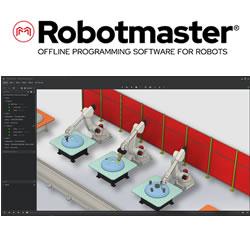High demand for image processing systems in the medical sector
Corona mass screening using IDS cameras
Health has become the dominant topic worldwide. Research and development to protect the physical well-being of each individual as well as the entire population have an unprecedented significance. More than ever, laboratories and pharmaceutical companies are striving to accelerate their processes, for example by increasing the throughput of tests or speeding up the production and distribution of medicines. Airports are making increasing use of access controls, whether in the form of ID checks or temperature measurement devices, to identify travelers with symptoms of illness.
In all these areas, image processing can make an important contribution to protecting people and thus also saving lives. The possible applications are already almost unlimited and are becoming increasingly diverse in the age of Industry 4.0 - not least due to the use of artificial intelligence.
A British company is currently using IDS cameras together with thermal imaging cameras to detect people with elevated temperatures and so potentially have the corona virus. The non-contact thermal imaging and measurement system designed for mass screening, detects temperature differences of less than 0.6 °C and with an accuracy of less than 0.3 °C. "The Thermoteknix FevIR Scan software tracks people in real time as they walk in front of the camera and shows their maximum face temperature on screen," Richard Hames, Sales Director at Thermoteknix Systems Ltd., explains.
The so-called FevIR Scan 2 system consists of a thermal imaging camera and a visible USB 2 uEye LE CMOS camera in a sealed housing that is connected to a laptop PC running Thermoteknix FevIR Scan 2 software. The USB 2.0 uEye LE board-level version is particularly lightweight and compact - ideal for finding a place next to the thermal imaging camera in the small FevIR Scan 2 housing. A thermal reference source with constant temperature is included in front of the thermal imaging camera. It allows for constantly calibration of the thermal imager for accurate temperature measurement to detect persons with elevated skin temperature. The UI-1642LE-C model is used to detect people passing through the system. It is equipped with a 1.3 megapixel CMOS sensor from ON Semiconductor, which has a resolution of 1280 x 1024 pixels and a frame rate of 25 frames per second. This frame rate enables screening in places with a high volume of people, such as airports or entrance halls.
Other IDS solutions also provide valuable services in medical technology. For example, the GampBOX image processing system from i-mation GmbH makes it easier for the pharmaceutical industry and its suppliers to optimise processes while complying with strict quality guidelines. "In this way, we can contribute to considerably shortening the time to market for drugs, for example," says Kai Weisser, project manager at i-mation GmbH. Along the entire life cycle of drugs and pharmaceutical products, from research into new active ingredients and therapies, through production and packaging, to distribution and application, the use of new machine vision technologies opens up numerous opportunities for process optimization. Thus, IDS industrial cameras can also help the healthcare sector to optimize processes, ensure quality, advance research and ultimately serve people.
uEye LE CMOS camera from IDS
Further information: https://en.ids-imaging.com/markets.html
Illustrations (© IDS Imaging Development Systems GmbH)
About IDS Inc.
IDS Inc. was founded in 2007 as a subsidiary of IDS Imaging Development Systems GmbH. The industrial camera manufacturer IDS Imaging Development Systems GmbH develops high-performance, easy-to-use USB, GigE and 3D cameras with a wide spectrum of sensors and variants. The almost unlimited range of applications covers multiple non-industrial and industrial sectors in the field of equipment, plant and mechanical engineering. In addition to the successful CMOS cameras, the company expands its portfolio with vision app-based, intelligent cameras. The novel image processing platform IDS NXT is freely programmable and extremely versatile.
Since its foundation in 1997 as a two-man company, IDS has developed into an independent, ISO-certified family business with more than 300 employees. The headquarters in Obersulm, Germany, is both a development and production site. With branches in the USA, Japan, South Korea and UK as well as other offices, IDS is represented internationally.
Featured Product

